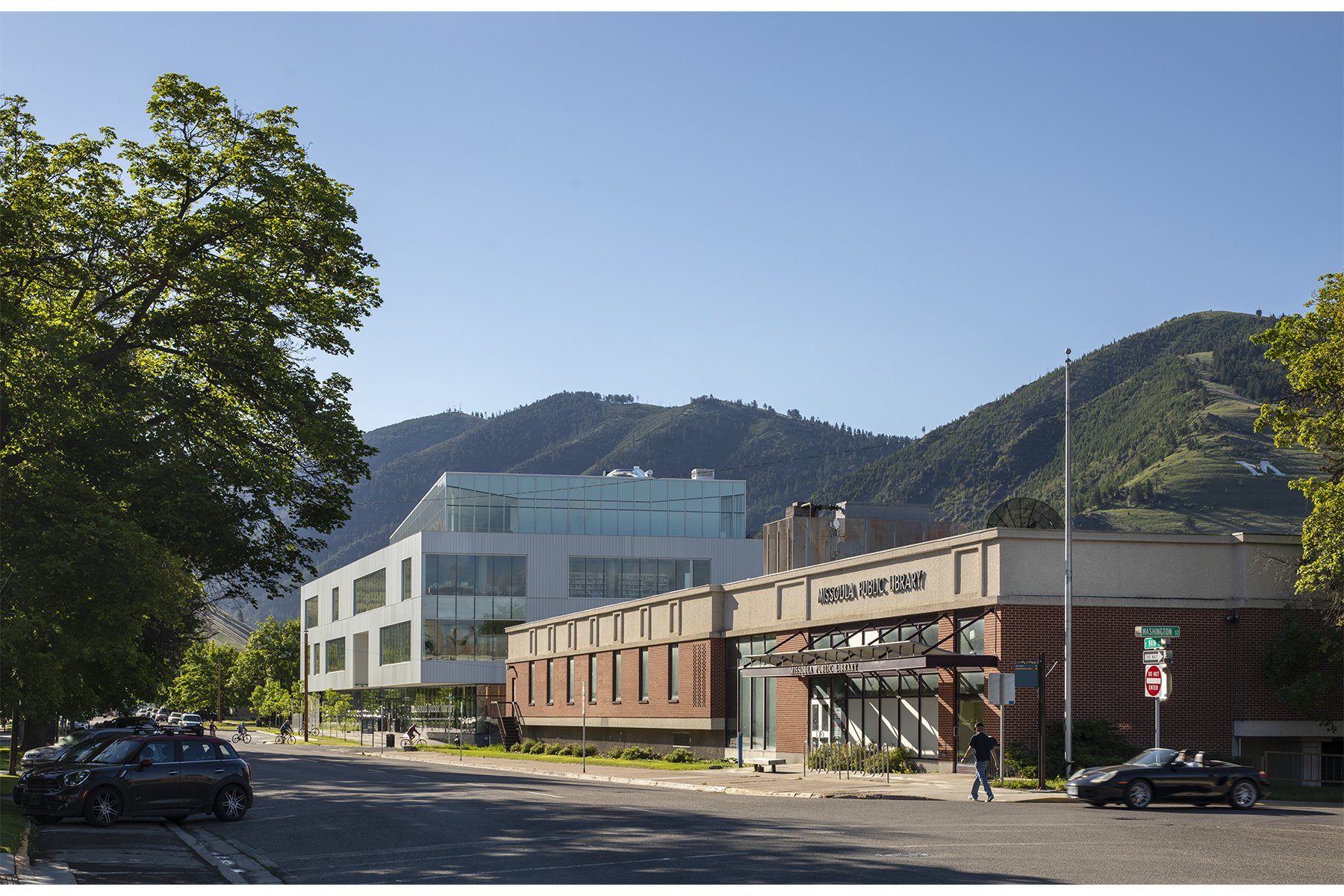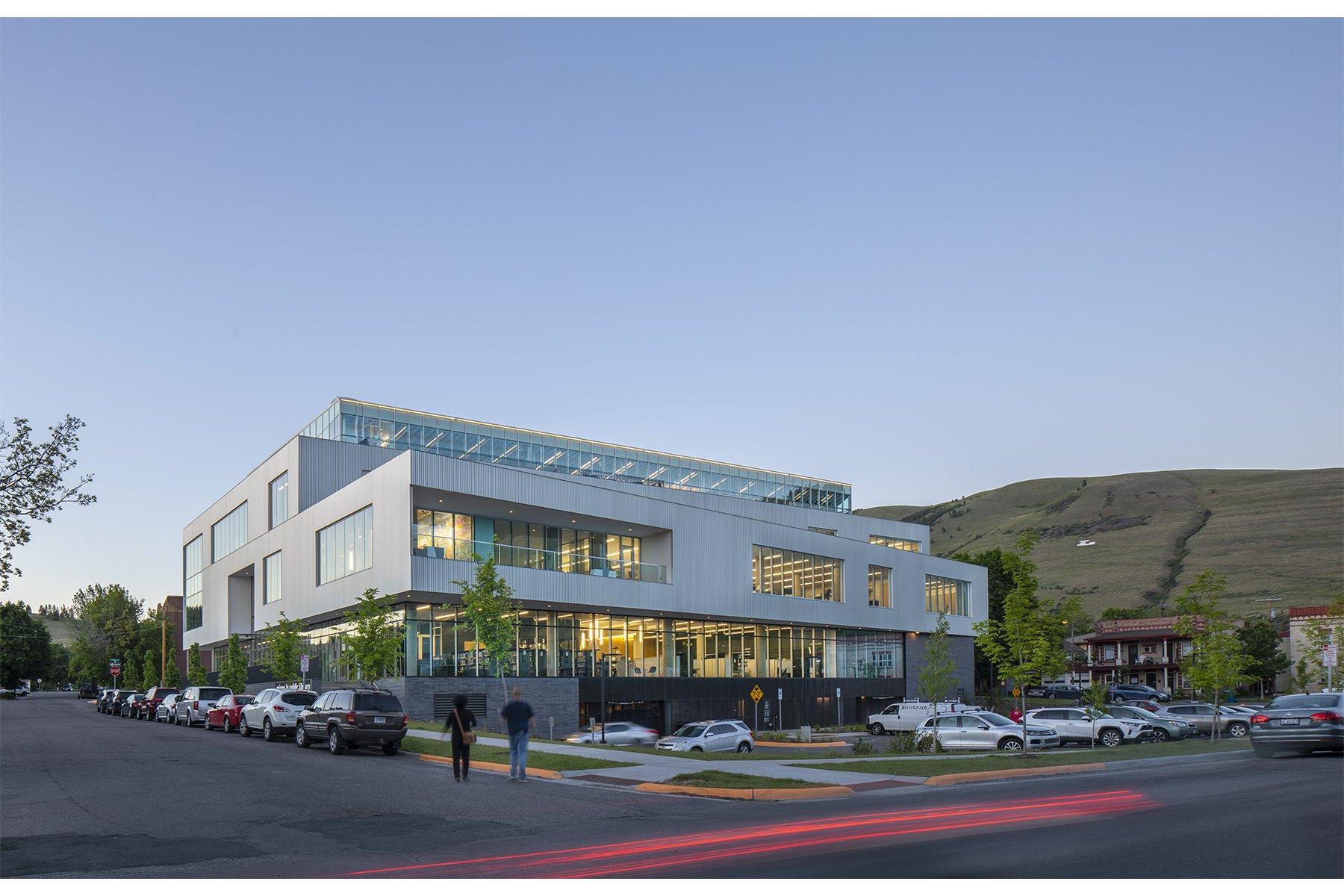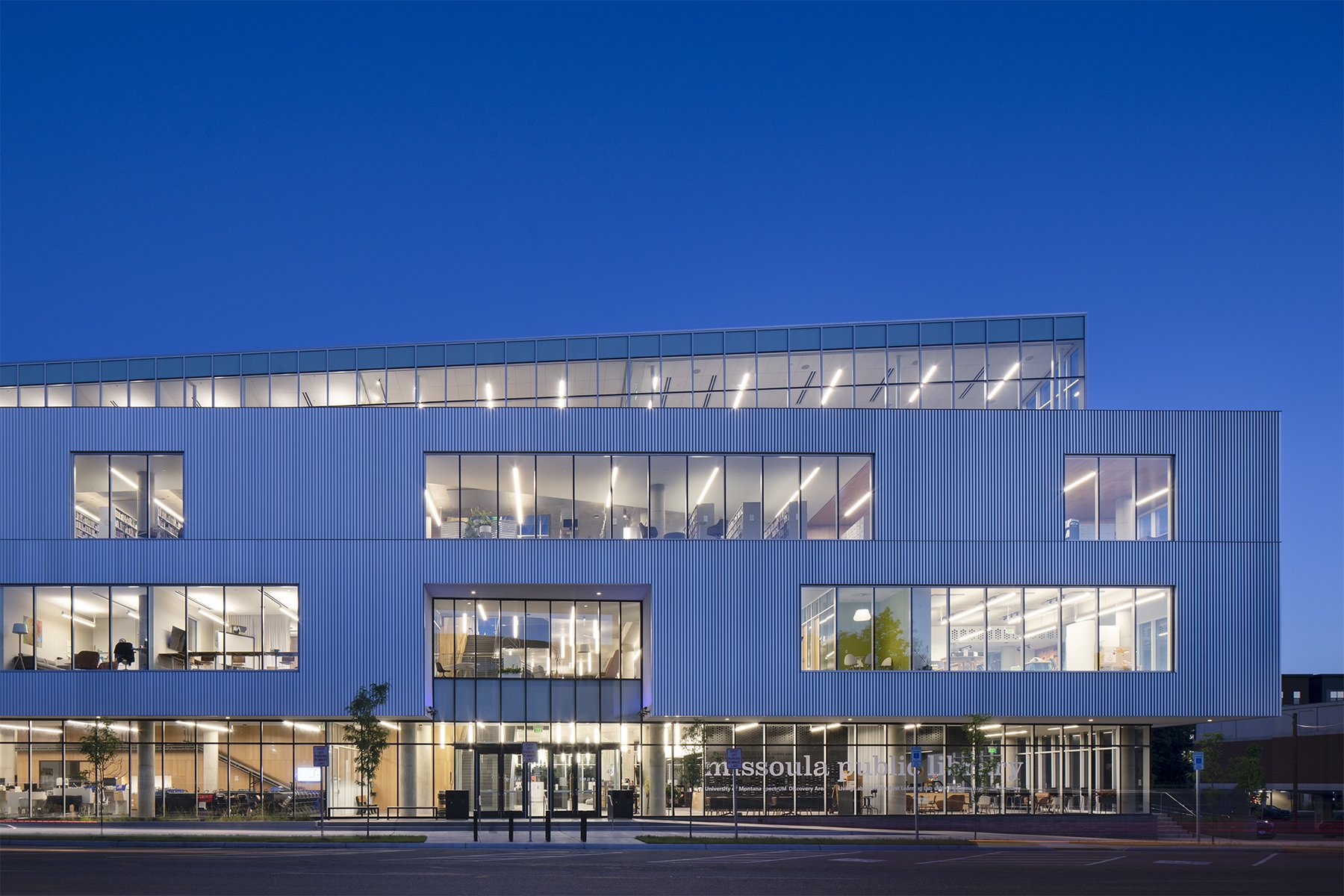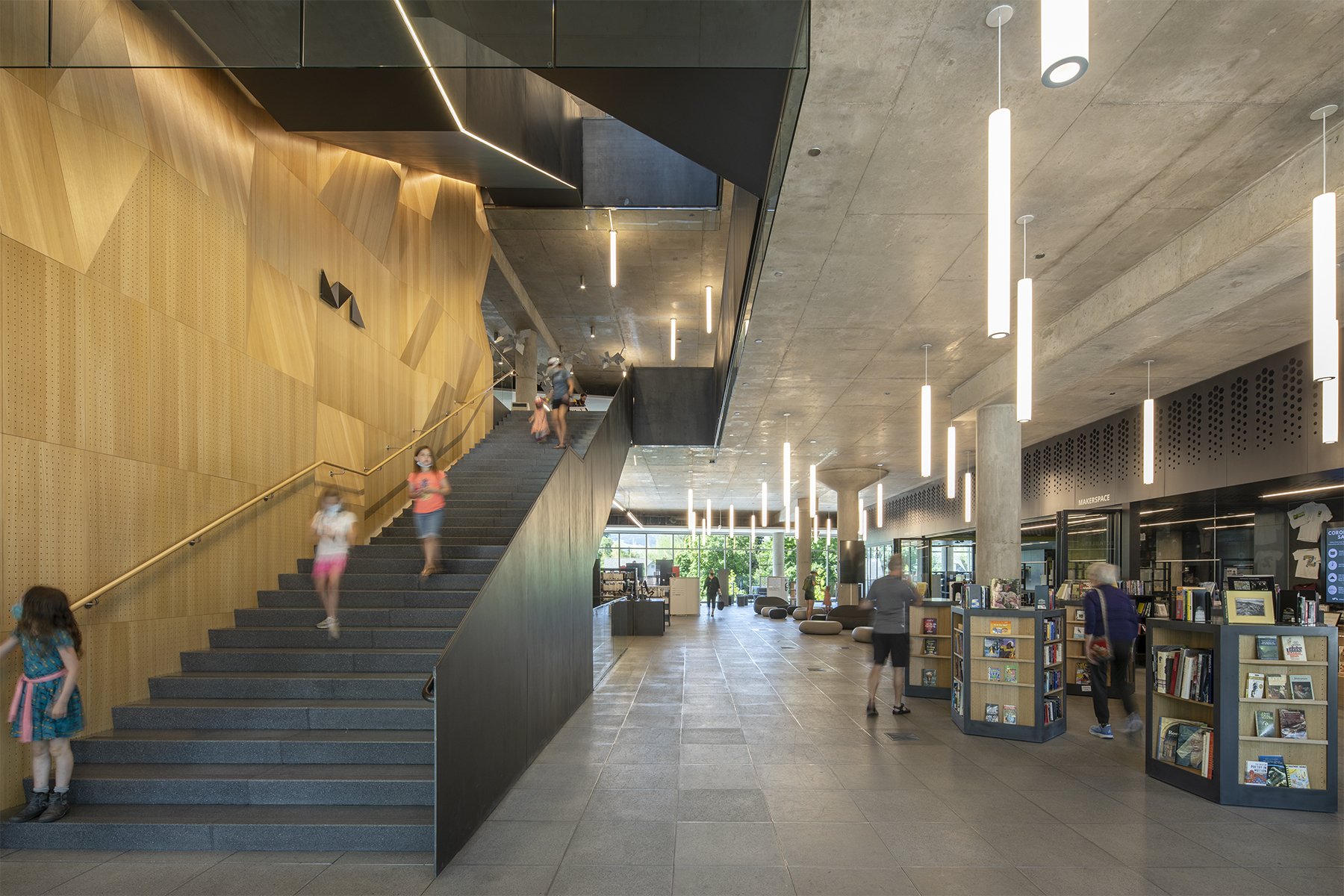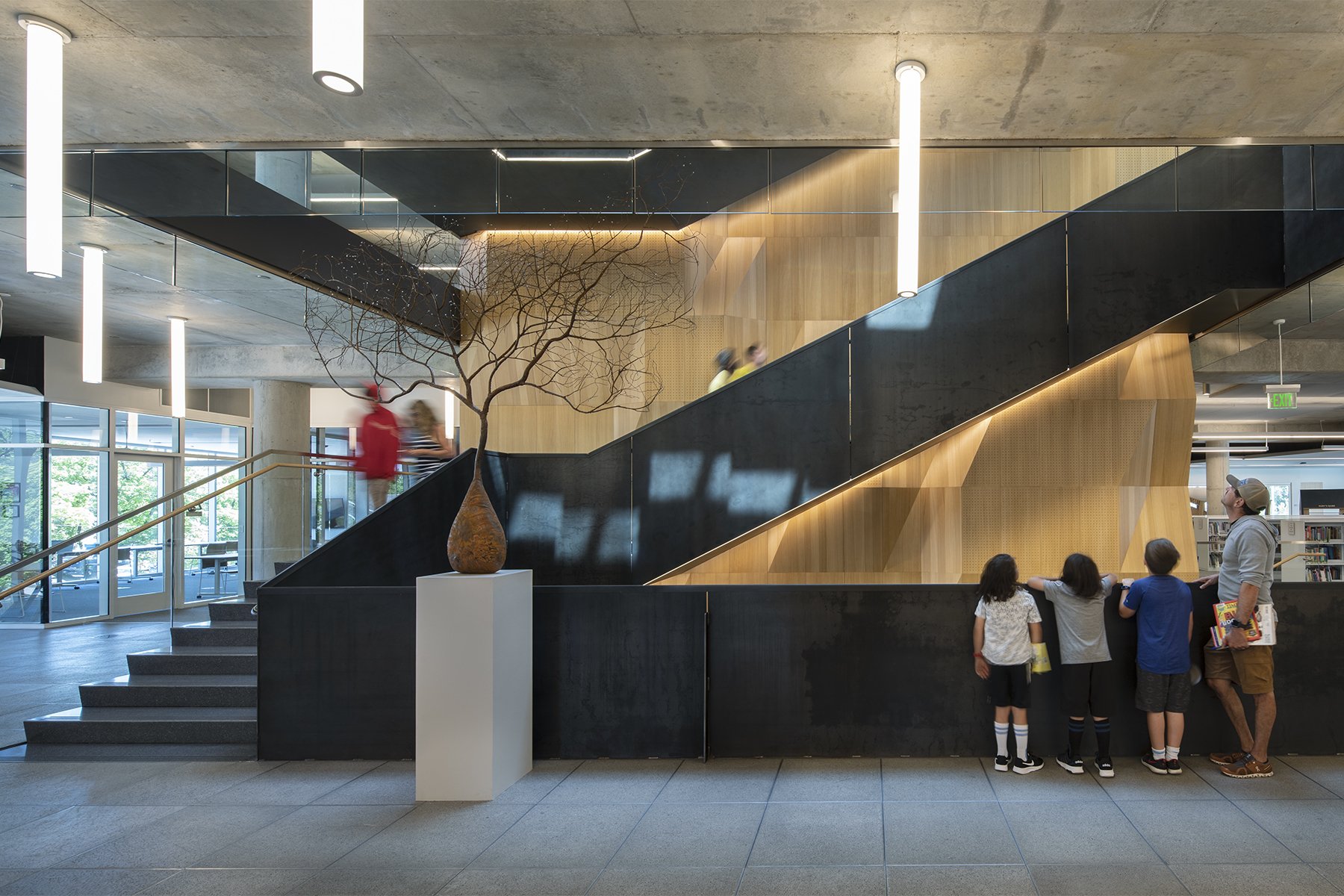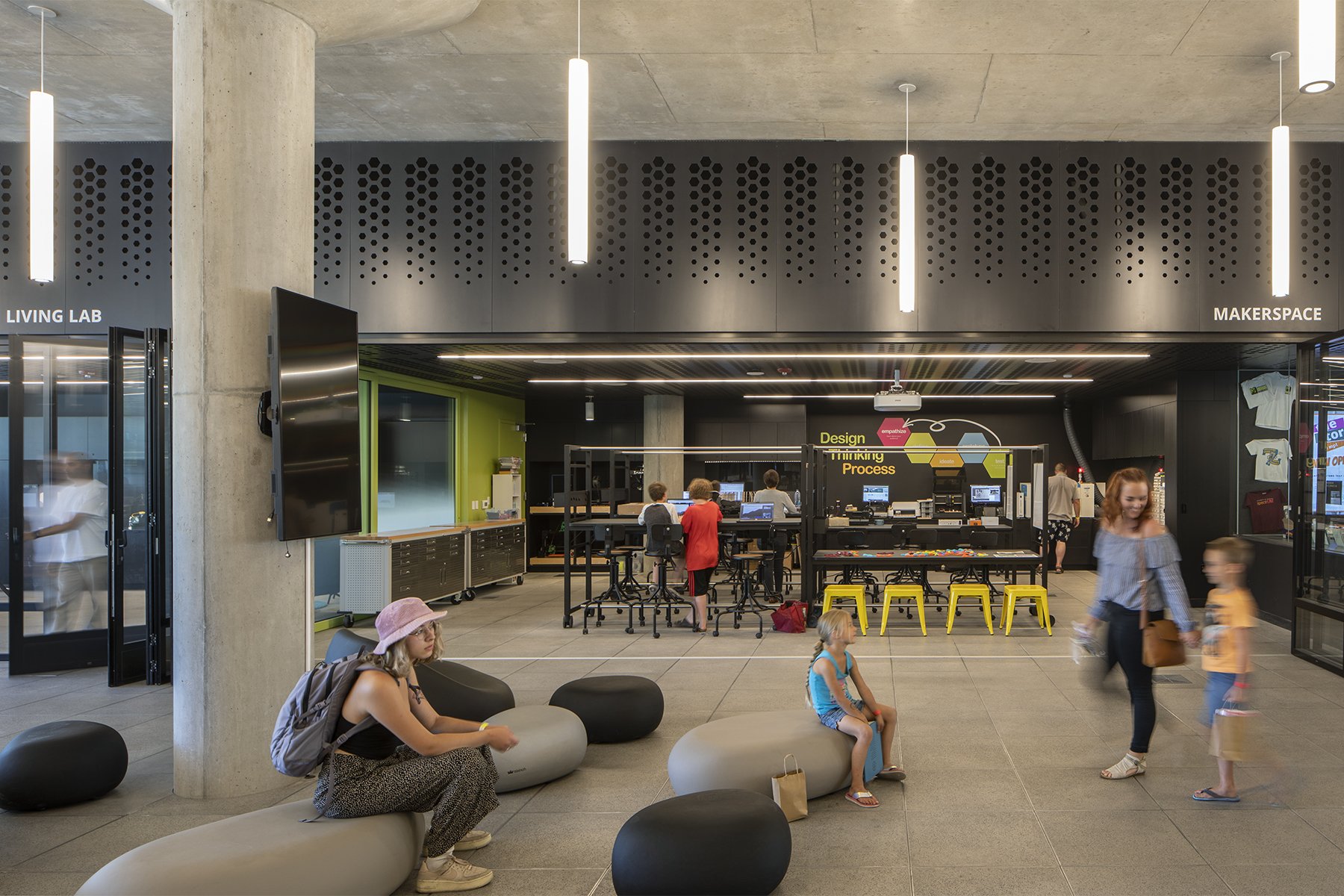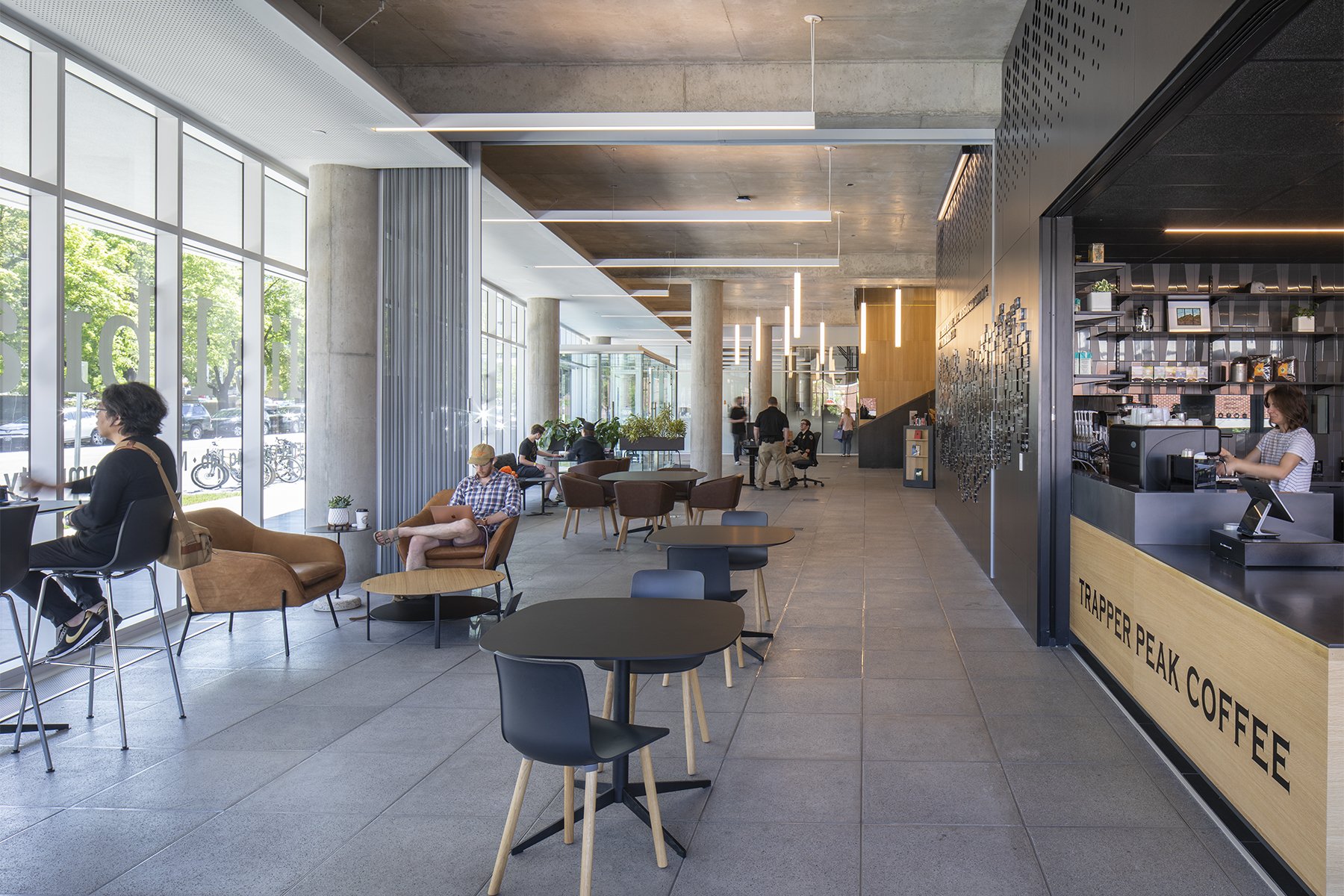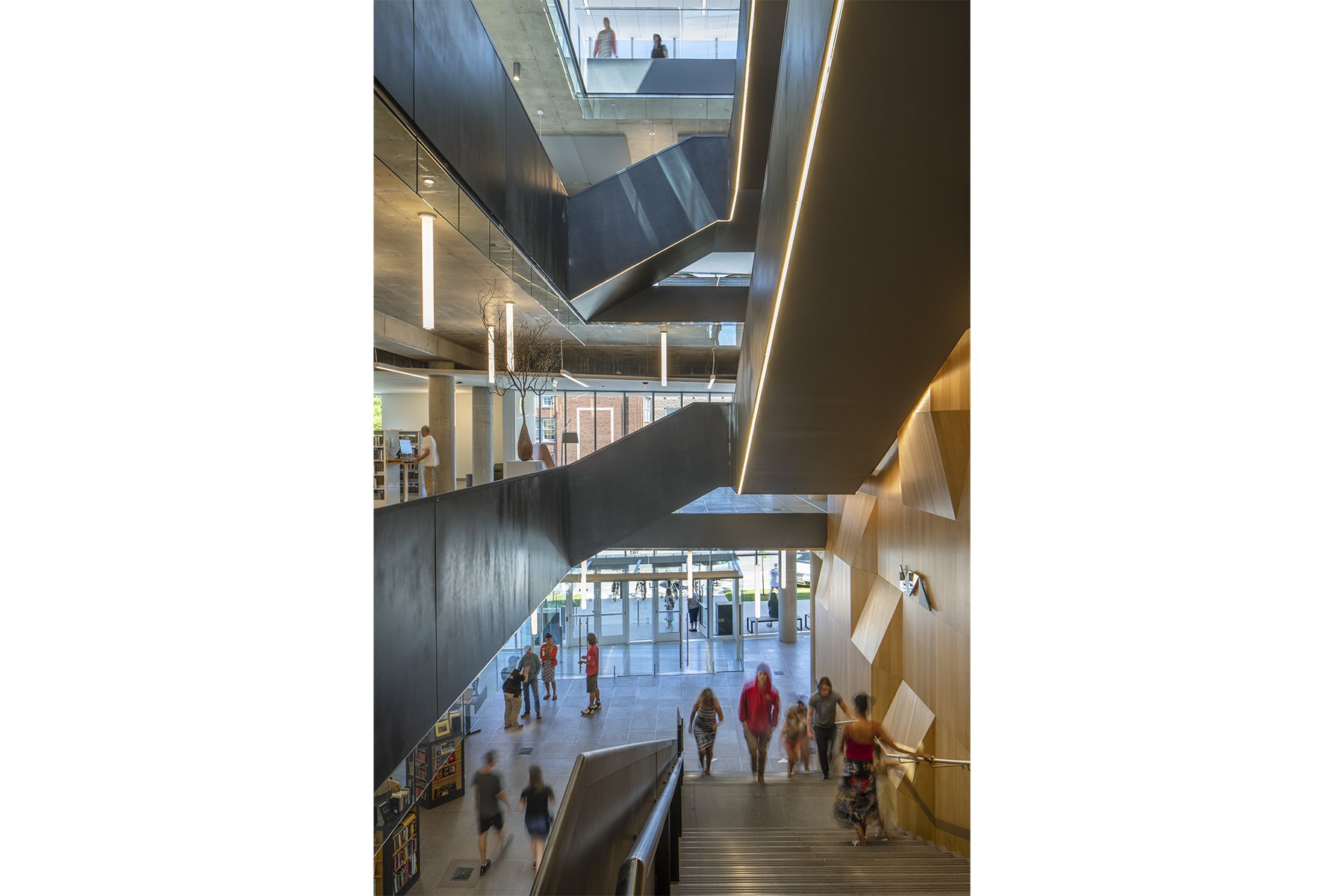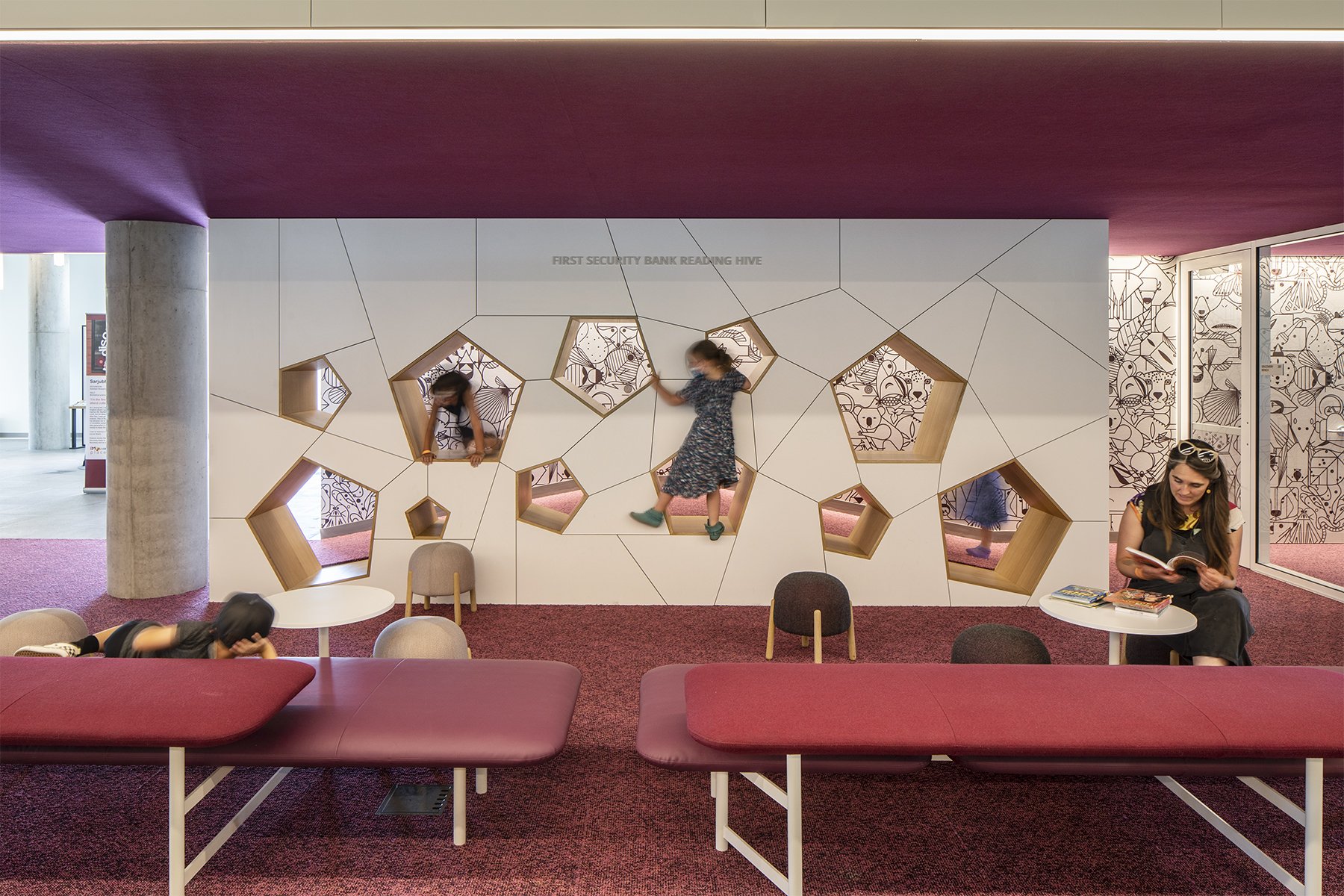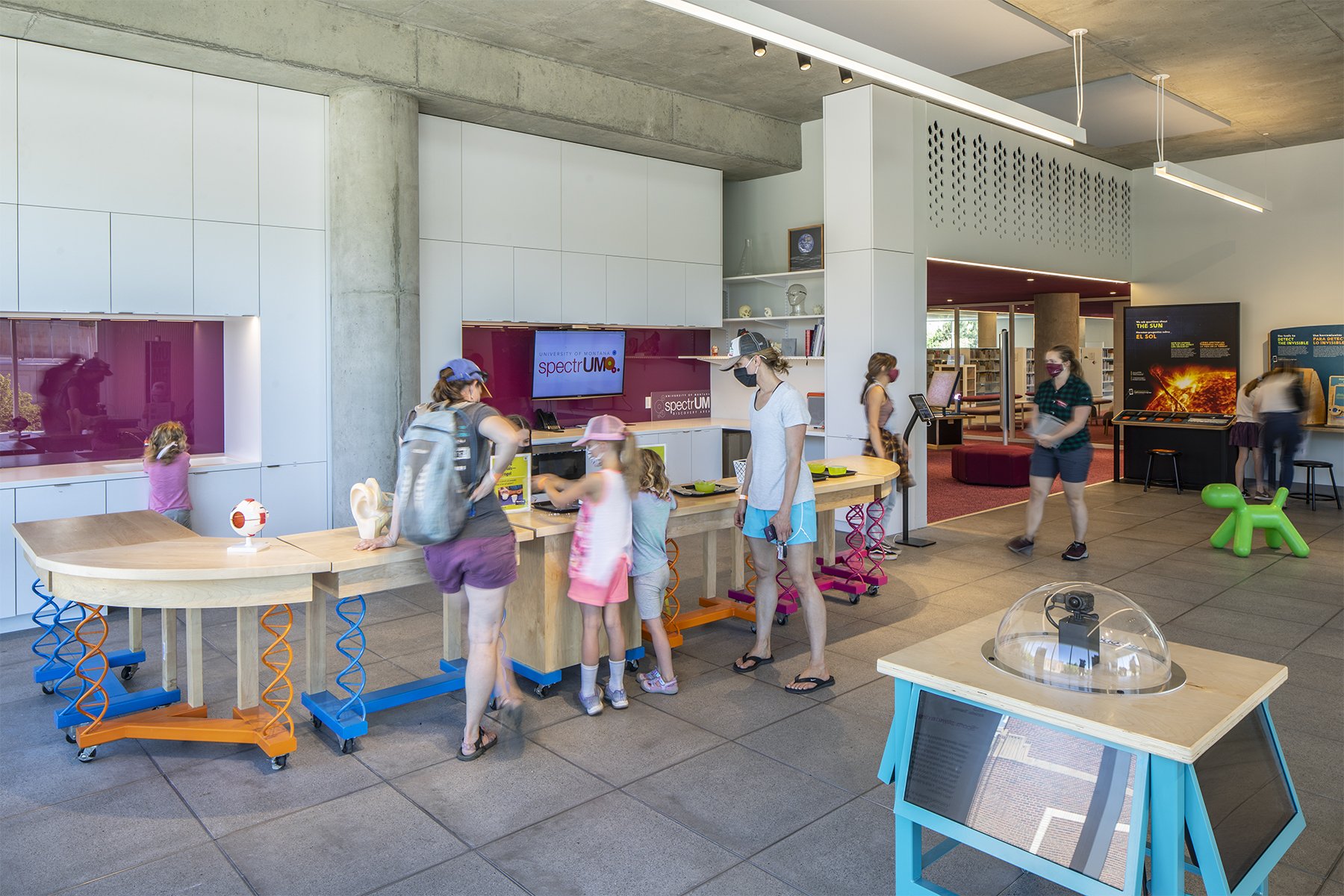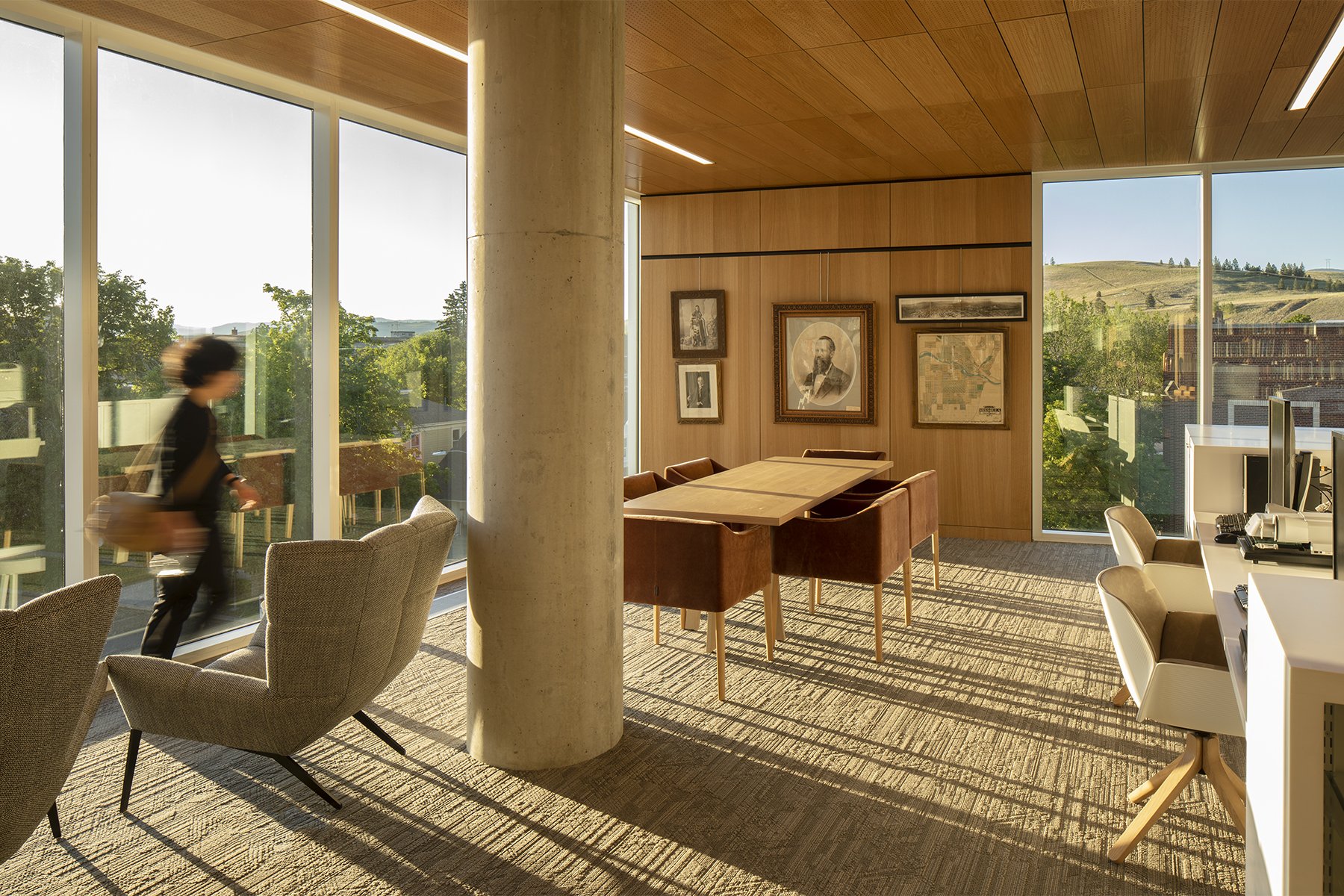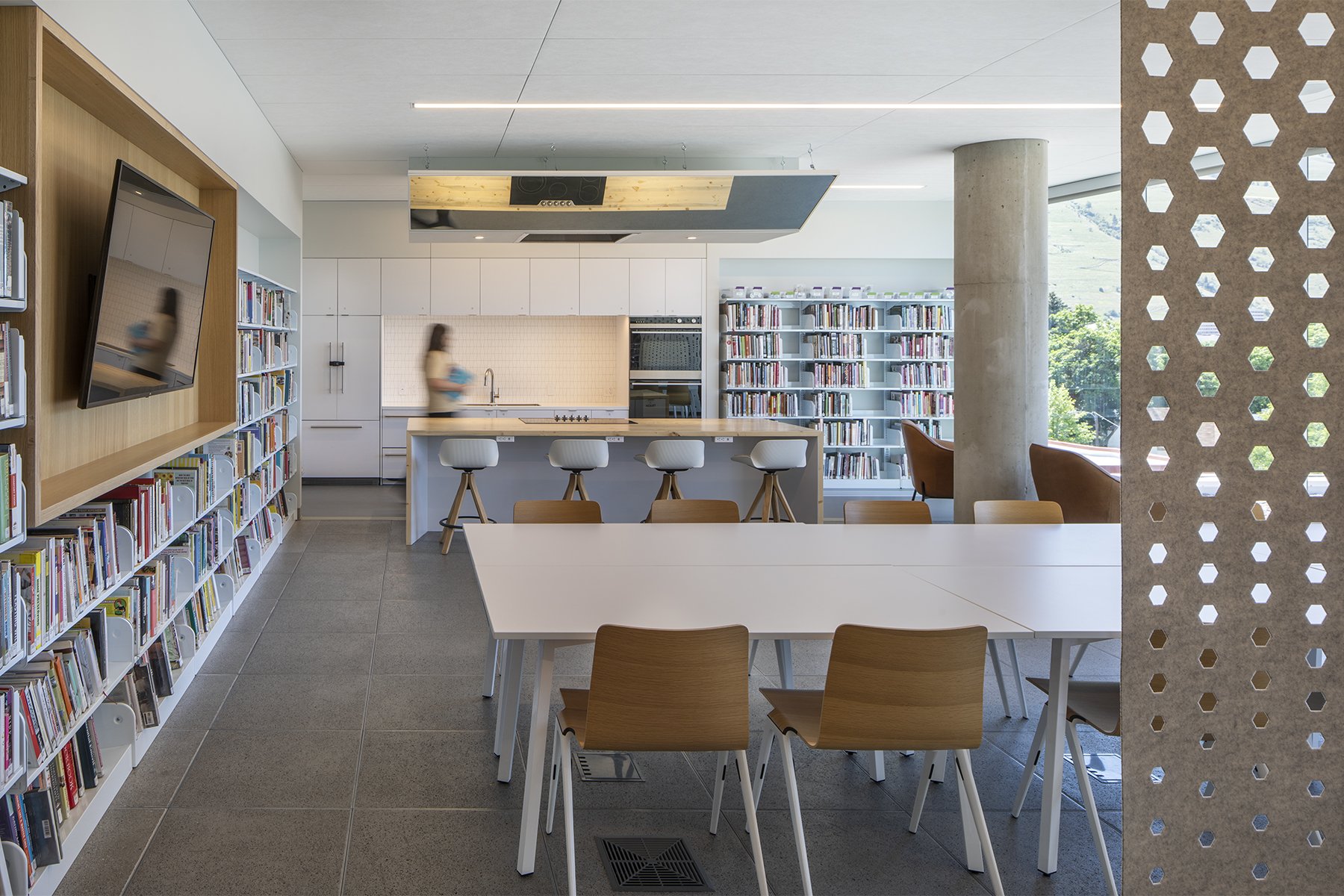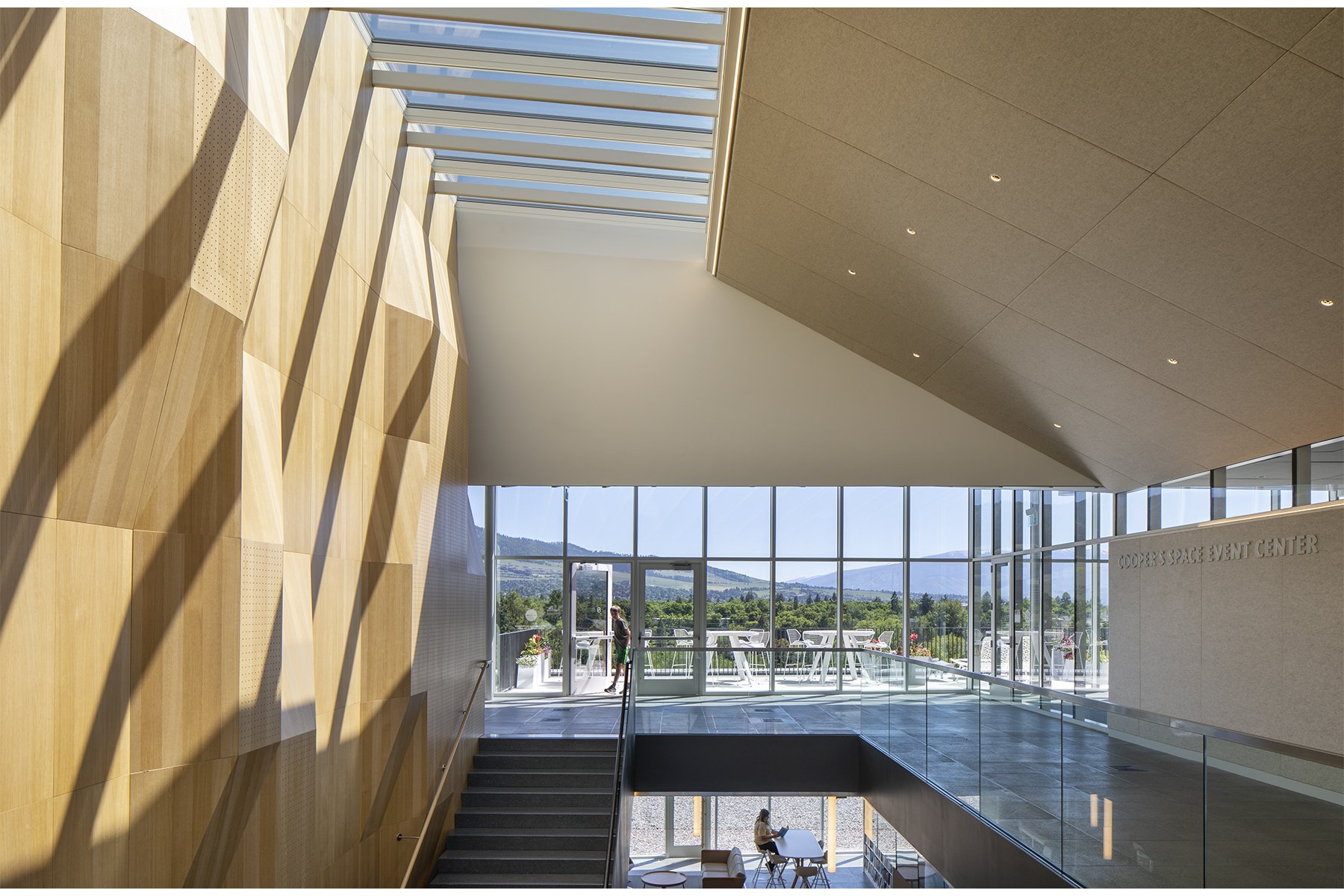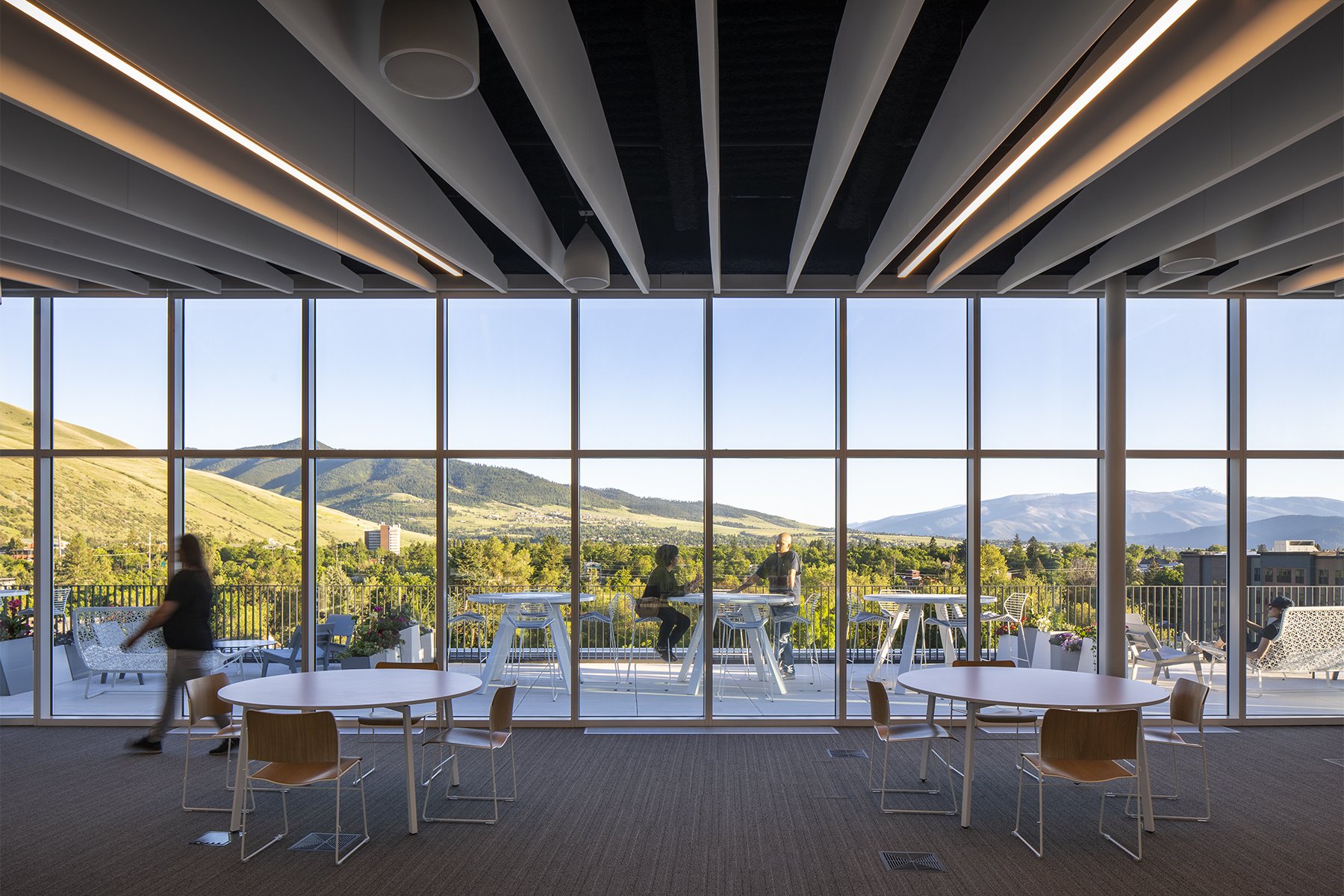Library Designed by Minnesota Firm Wins International Public Library of the Year
Missoula Public Library in Montana, designed by MSR Design, won over finalists from Denmark, Latvia, and Saudi Arabia
By Chris Hudson | July 28, 2022
The Main Street entry. Photo by Lara Swimmer.
FEATURE
It’s hard to think of a building type that has undergone more transformation in the 21st century than the public library. The inwardly focused book and periodical collections of yesteryear are now light-filled community centers brimming with technology and an array of learning environments and social spaces. Some are central components of new mixed-use developments and park spaces, and some share their facilities with community organizations and services.
MSR Design, a Minnesota architecture firm with a growing résumé of award-winning public libraries across the country, has had a hand in shaping library trends and innovations since the 1980s. One of the firm’s recent projects, Missoula Public Library (MPL) in Montana—a four-story, 106,000-square-foot facility that celebrates its downtown setting and mountain backdrop, indoors and out—was just named the winner of the 2022 IFLA/Systematic international Public Library of the Year. The new library has garnered attention both for its design and for the community resources it houses: Missoula Community Access Television, Families First Learning Lab, and the University of Montana spectrUM Discovery Area and Living Lab.
ENTER sat down with MSR Design CEO Traci Lesneski, Assoc. AIA, to learn more about the Missoula facility and the keys to designing libraries that embody community aspirations.
MSR Design CEO Traci Lesneski, Assoc. AIA. Photo courtesy of MSR Design.
What’s unique about Missoula Public Library? What about the project was most gratifying?
[Recently retired MPL director] Honore Bray’s vision for an equitable educational hub that supported the full spectrum of literacies in the 21st century was very exciting to us. Honore spoke passionately about the need to level the field and about how impactful a multilayered, hands-on, active culture house for people of all ages would be for the region. The kind of partnerships she had in mind for the new library was novel for a public library in the U.S., with MPL providing several community organizations free space in the building in exchange for each partner waiving the “pay to play” model it had been using. That innovative arrangement and the place itself—it’s nestled in a valley at the hub of five mountain ranges—totally hooked us.
Images 1–15: Main Street view toward the new library; view from the river; the reflective exterior cladding; inside the main entry; the “mountain climb” main stair; the marketplace and Living Lab; full-service café; view from second-level landing; lounge adjacent to children’s collection; spectrUM STEM Discovery Area; Missoula Special Collections Study Area; teaching kitchen; community gathering space on the fourth level; flexible meeting room with view of Mount Jumbo; flexible gathering space with view of Mount Sentinel. Photos by Lara Swimmer.
Public libraries serve diverse communities and users of all ages and abilities. How do you and your library clients bring community members into the design process? What questions do you ask, and what do you learn?
We use a wide variety of methods for a robust community conversation, including surveys, workshops, and conversations or events centered around making something together. Part of a successful conversation that uncovers what is truly important to a community is seeding ideas about possibilities. Often, people aren’t aware of what libraries are and can be for their community. We uncover the most impactful ideas by asking questions that aren’t about architecture at all. For example, we ask people to consider what would set their community up for long-term success, or make the city more livable, or entice young people to stay.
What other sources of information and inspiration do you draw from in your efforts to create a library architecture and experience that feels part of its place and community?
We lean heavily into place, including environmental factors such as wind patterns and solar path, as well as unique flora, geology, and atmospheric effects. Montana’s fire season impacts the color of daylight during parts of the year. That, along with weather patterns that can change quickly in the western Montana valleys, influenced our choice in cladding material for the library; the metal acts as a reflective canvas for the changing sky and light conditions.
“We uncover the most impactful ideas by asking questions that aren’t about architecture at all. For example, we ask people to consider what would set their community up for long-term success, or make the city more livable, or entice young people to stay.”
On a hike of Mount Sentinel during our Missoula Immersion Week—the trailhead is only a mile from the library site—I came across a lone bright fuchsia flower in a sea of dirt and scrub. It was such a sweet sight; I still remember how taken I was with the flower. I showed a photo to some locals, and they confirmed it was a bitterroot, Montana’s state flower. It’s apparently hard to find, only blooming for a few weeks. The flower is meaningful to Indigenous peoples of the region and recognizable to all Montanans. That bit of serendipity informed our color scheme for the children’s floor of the library.
Dream a little about the future of library design. What interesting new things might be on the horizon for community libraries? With advances in technology, including virtual reality, will there always be a need for physical spaces?
There will always be a need for places to gather. We are social beings at our core, hardwired to need one another for well-being and, frankly, survival. Libraries hold that space well, especially as they have evolved to be more inclusive in their building offerings, recognizing that we all need something a little different from the built environment.
Augmented and virtual reality tech are exciting for experiential play and learning. Think of virtual travel and discovery, or “holding” an ancient object to learn how it was made. It’s exciting for building navigation, too—it’s already being used in parts of the world for orienting people to a library collection, for example. I’ve been reading about research into replicating human touch through prosthetic devices (for amputees). Imagine being able to go to your local library and hug a loved one a thousand miles away or shake hands with a job interviewer in a different location. We won’t all have access to these technologies at home. One of the many critical roles libraries play in our society is to provide access, so we all have an opportunity to grow, learn, and thrive.
MSR Design was the lead design architect and interior designer for the new Missoula Public Library. Montana firm A&E Design was the architect of record.



